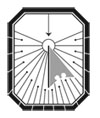Transformation of the French Pattern of a Naturalistic Character in Ivan Franko’s Literary Works
DOI:
https://doi.org/10.18523/kmhj150401.2018-5.183-200Keywords:
naturalism, realism, Ivan Franko, artistic image, physiological determinism, temperamentAbstract
The article deals with the means of constructing a naturalistic character, the model for which was proposed by French writers: the Goncourt brothers and Émile Zola. Naturalists draw their personage concept from the interpretation of its biological nature. The focus of its depiction is shifted to the study of fundamental features of human nature rather than “variables” of the historical forms of its manifestation. A naturalistic character, being “a biological being” rather than “a set of social relations,” is completely absorbed by the environment. The “social” core of a realistic personage is based on the principles of typification, but the “biological” core of a naturalistic character cannot be a generalized type because in it the individual prevails over the typified. Images of Germinie Lacerteux and Thérèse Raquin from the Goncourts’ and Zola’s same-name novels respectively are considered to be prototypes of naturalistic characters. In Ukrainian literature, Ivan Franko interpreted and synthesized Western European experience using realistic and naturalistic art to create his own concept of “scientific realism.” The difference in Franko’s personage construction lies in the fact that he does not confine himself to the observation and description of his heroes’ behavior but offers a plan for correcting their deficiencies.References
Bourget, Paul. Le Disciple. Paris: Lemerre, 1889.
De Falco, Domenica. La Femme et les personnages féminins chez les Goncourt. Paris: Honoré Champion, 2012.
Fedun, Oleksandra. “Psykholohichno-sotsialnyi aspect u malii prozi Ivana Franka [The Psychological and Social Aspects of Ivan Franko’s Short Prose].” Ukrainske literaturoznavstvo 26 (2006): 64–70.
Franko, Ivan. Zibrannia tvoriv u 50 tomakh [Collected Works in 50 Volumes]. Vol. 14. Kyiv: Naukova Dumka, 1978.
Franko, Ivan. Zibrannia tvoriv u 50 tomakh [Collected Works in 50 Volumes]. Vol. 18. Kyiv: Naukova Dumka, 1978.
Franko, Ivan. Zibrannia tvoriv u 50 tomakh [Collected Works in 50 Volumes]. Vol. 20. Kyiv: Naukova Dumka, 1978.
Franko, Ivan. Zibrannia tvoriv u 50 tomakh [Collected Works in 50 Volumes]. Vol. 28. Kyiv: Naukova Dumka, 1978.
Goncourt, Edmond et Jules de. Germinie Lacerteux. La Bibliothèque électronique du Québec, Collection À tous les vents. https://beq.ebooksgratuits. com/vents/Goncourt-Germinie.pdf.
Holod, Roman. Ivan Franko ta literaturni napriamy kintsia XIX — pochatku XX stolittia [Ivan Franko and Literary Movements of the Late 19th — Early 20th Centuries]. Ivano-Frankivsk: Lileia-NV, 2005.
Holod, Roman. Naturalizm u tvorchosti Ivana Franka: do pytannia pro osoblyvosti tvorchoho metodu Kameniara [Naturalism in Ivan Franko’s Creative Works: On the Question of His Creative Method]. Ivano-Frankivsk: Lileia-NV, 2000.
Kosylo, Nataliia. “Kontsept naturalizmu v tvorakh na robitnychu tematyku Dzhordzha Gissinga ta Ivana Franka: heneza, typolohiia [The Concept of Naturalism in George Gissing’s and Ivan Franko’s Creative Works on the Labor Subject: Genesis, Typology].” Visnyk Prykarpatskoho universytetu. Filolohiia 23–24 (2009–2010): 283–89.
Kosylo, Nataliia. Typolohiia anhliiskoho i ukrainskoho naturalizmu kintsia XIX —
pochatku XX stolittia: problematyka, poetyka [The Typology of English and Ukrainian Naturalism at the End of the 19th — Beginning of the 20th Centuries: Problems, Poetics]. Ternopil: Volodymyr Hnatiuk Ternopil National Pedagogical University, 2010.
Lemaitre, Jules. Les contemporains. Paris: Société française d’imprimerie et de librairie, 1886.
Matviishyn, Volodymyr. “Poetyka frantsuzkoho naturalizmu u svitli literaturnokrytychnykh zasad Ivana Franka [French Naturalist Poetics in the Light of Ivan Franko’s Literary and Critical Foundations].” Literatura. Chas. Postati, edited by Nataliia Yatskiv, 229–36. Ivano-Frankivsk: Vasyl Stefanyk Precarpathian National University, 2013.
Nalyvaiko, Dmytro. Iskusstvo: napravleniia, techeniia, stili [Art: Movements, Trends, Styles]. Kyiv: Mystetstvo, 1985.
Pastukh, Taras. Romany Ivana Franka [Ivan Franko’s Novels]. Lviv, 1997.
Pellissier, Georges. Le Mouvement littéraire au XIXe siècle. Paris: Librairie Hachette, 1900.
Venhrynovych, Nataliia. Fenomen naturalizmu Ivana Franka i amerykanska proza kintsia XIX — pochatku XX stolittia [The Phenomenon of Ivan Franko’s Naturalism and American Prose of the Late 19th — Early 20th Centuries]. Ivano-Frankivsk: Vydavets H. M. Kushnir, 2016.
Yatskiv, Nataliia. “Zasoby portretnoi kharakterystyky u romani brativ Honkuriv Germinie Lacerteux [Means of Portrait Characteristics in the Goncourt Brothers’ Germinie Lacerteux].” Sultanivski chytannia 3 (2014): 162–70.
Zola, Émile. Le roman expérimental. Paris: G. Charpentier éditeur, 1881.
Zola, Émile. Les Rougon-Macquart. L’Assommoir. La Bibliothèque électronique du Québec, Collection À tous les vents. https://beq.ebooksgratuits.com/ventsxpdf/Zola‑07.pdf.
Zola, Émile. “Mes haines, causeries littéraires et artistiques.” G. Charpentier et
E. Fasquelle, éditeurs (1893): 67–84.
Zola, Émile. Thérèse Raquin. La Bibliothèque électronique du Québec, Collection À tous les vents. https://beq.ebooksgratuits.com/vents/zola-raquin.pdf.
Downloads
Published
How to Cite
Issue
Section
License
Kyiv-Mohyla Humanities Journal provides free access to original research without restriction barriers (i.e. subscription fees, licensing fees etc.). The journal allows re-use of content for non-commercial/educational purposes indexing the source.
Unless otherwise indicated, content is licensed under the Creative Commons Attribution 4.0 International (CC BY 4.0) license, which means you are free to:
copy
distribute
transmit
adapt
and make commercial use of the work
...provided that any use is made with attribution to author(s) and Kyiv-Mohyla Humanities Journal.
The author passes copyright of the article to the journal and Kyiv-Mohyla Humanities Journal; author can archive post-print articles (PDF versions) on s/he web-site (http://www.sherpa.ac.uk).

